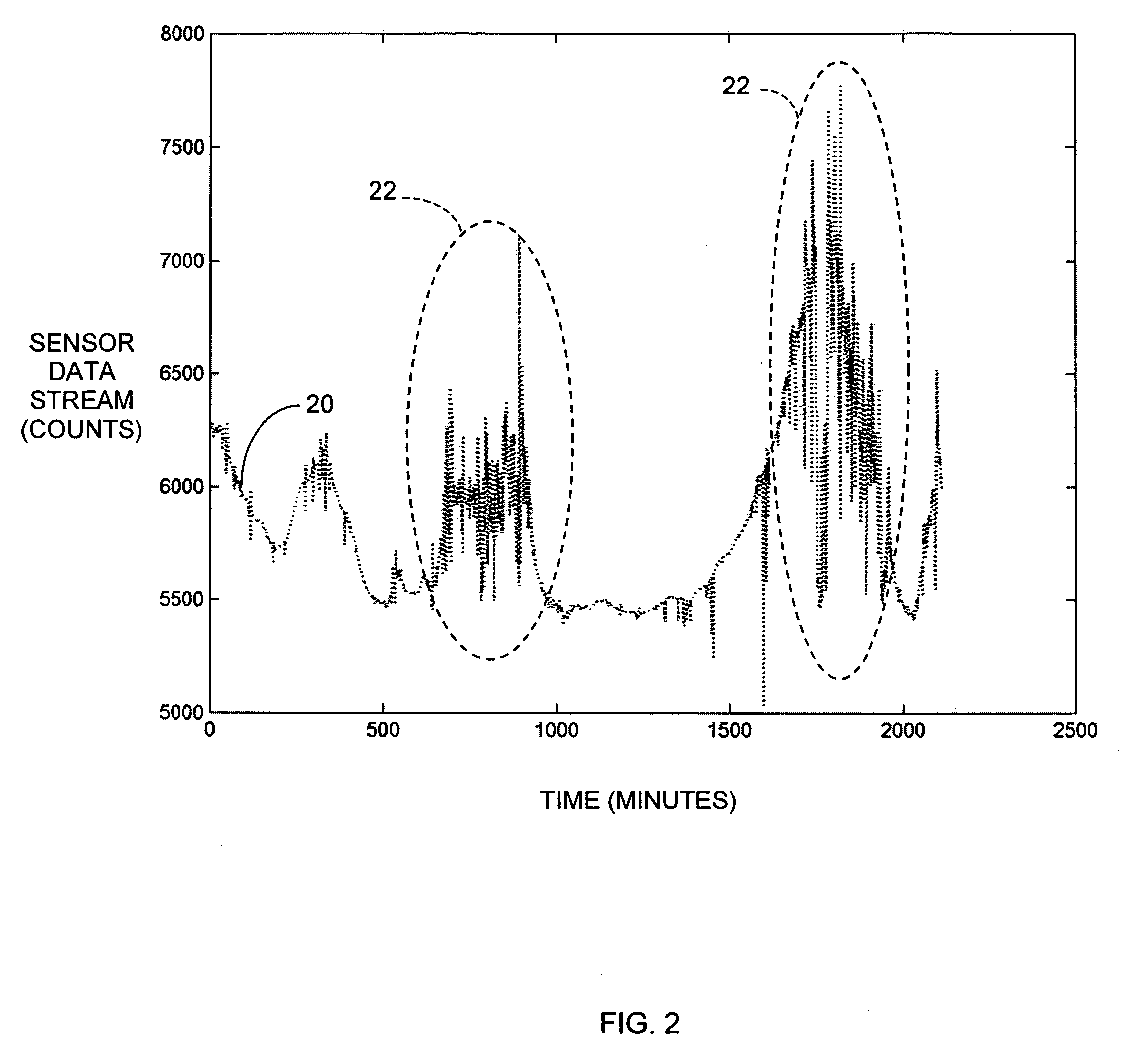Silicone composition for biocompatible membrane
a biocompatible membrane and composition technology, applied in the field of biosensor materials, can solve the problems of oxygen becoming a limiting reactant, unable to achieve the required amount easily, and affecting the stability of the membrane,
- Summary
- Abstract
- Description
- Claims
- Application Information
AI Technical Summary
Benefits of technology
Problems solved by technology
Method used
Image
Examples
example 1
[0269] Size exclusion chromatography was performed on a system equipped with a Dynamax RI-1 detector, Waters 590 pump and two Shodex AT-80M / S columns in series. The system was calibrated using narrow molecular weight polystyrene standards whose Mw / Mn was less than 1.09. Samples were run in toluene at 4 ml / min and room temperature. FTIR spectra were collected on a PERKIN-ELMER 1600 Fourier-Transform Infrared spectrometer running in transmission mode. Samples were evaluated between KBr salt plates.
example 2
Preparation of Cyclic Hydrophilic Monomer (Compound I)
[0270] To a 1 L three-necked round-bottomed flask were added tetramethylcyclotetrasiloxane (100 g, Gelest) and Pt-complex catalyst 2% in toluene (5 g, Aldrich). A thermometer, mechanical stirrer, heating mantle, pressure equalizing dropper funnel (500 ml), and a water cooled condenser were fitted to the flask. Heat was applied to the apparatus such that the flask temperature rose to and was held at about 70° to 80° C. Polyethyleneglycol allyl methyl ether (420 g, Clariant AM-250) was added dropwise to the flask over a period of fourteen hours. The reaction progress was monitored by observing the Si—H stretch (2163 cm−1) in the FTIR spectrum. After no Si—H stretch was observed in the FTIR spectrum, the heating mantle was removed from the apparatus. The resulting yellow reaction mixture was allowed to cool to room temperature, and then was passed over a column (6″ tall, 1″ diameter) of activated aluminum oxide (Brockmann neutral, ...
example 3
Preparation of Vinyl Terminated Silicone Copolymer (Polymer II)
[0271] To a 1 L three-necked round-bottomed flask were added octamethyl cyclotetrasiloxane (255.0 g, Gelest), hydrophilic monomer Compound 1 (30.0 g), toluene (150 ml, Aldrich) and vinyldimethylsilyl terminated polydimethylsiloxane (15.0 g, 200 cp, Andisil VS-200). The flask was fitted with a mechanical stirrer, a heating mantle, a thermometer, a Dean Stark trap, a water-cooled condenser, and a nitrogen source. Nitrogen was bubbled through the monomer solution for one hour. The flask was then heated to and held at 140° C. for 45 minutes. During this time, 20 ml of toluene was removed with the solvent trap. The reaction mixture was allowed to cool to 90° C. and a phosphazene base P4-t-bu solution (15 μl, 1M in hexanes, from Fluka) was added via syringe to the solution. The reaction mixture was stirred for 1 hour, after which the reaction temperature was reduced to room temperature. The resulting material was washed twice...
PUM
| Property | Measurement | Unit |
|---|---|---|
| Temperature | aaaaa | aaaaa |
| Dispersion potential | aaaaa | aaaaa |
| Size | aaaaa | aaaaa |
Abstract
Description
Claims
Application Information
 Login to View More
Login to View More - R&D
- Intellectual Property
- Life Sciences
- Materials
- Tech Scout
- Unparalleled Data Quality
- Higher Quality Content
- 60% Fewer Hallucinations
Browse by: Latest US Patents, China's latest patents, Technical Efficacy Thesaurus, Application Domain, Technology Topic, Popular Technical Reports.
© 2025 PatSnap. All rights reserved.Legal|Privacy policy|Modern Slavery Act Transparency Statement|Sitemap|About US| Contact US: help@patsnap.com



